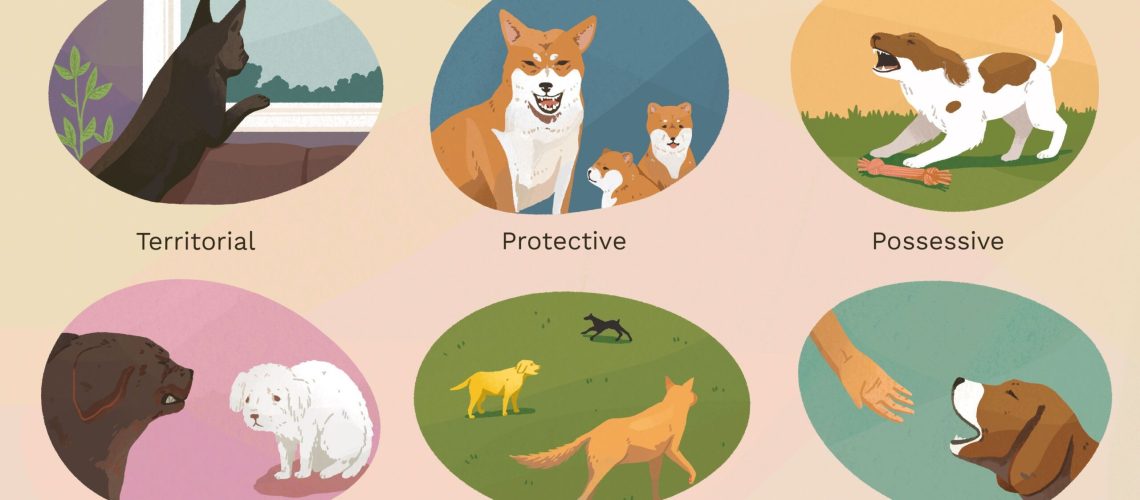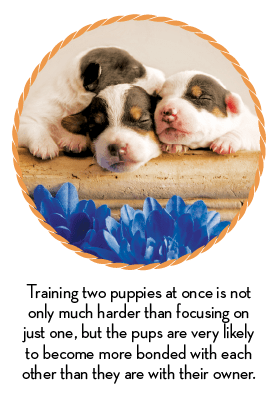Key Takeaways:
- Recognize the triggers: Identify the specific situations, people, or objects that provoke aggression in your dog.
- Implement positive reinforcement training: Use rewards and praise to encourage calm behavior and obedience.
- Establish clear boundaries and rules: Consistency and structure are essential for a dog's sense of security and reducing aggression.
- Seek professional help if needed: If your dog's aggression is severe or persistent, consult with a professional trainer or veterinarian for specialized guidance.
- Never punish aggressive behavior: Punishment can escalate aggression and damage the trust between you and your dog. Focus on prevention and positive reinforcement instead.
Are you tired of living in fear of your furry friend's sudden outbursts? Do you wish there was a way to bring peace and harmony back into your home? Well, look no further! In this article, we will explore the secrets to stopping sudden aggression in dogs. By understanding the underlying causes and implementing simple techniques, you can transform your four-legged companion into a calm and well-behaved member of the family. Whether you're a dog owner or just someone interested in canine behavior, delving into this subject will provide invaluable insights that can make all the difference. So, let's embark on this journey together and discover how to restore balance in your dog's life. Get ready to say goodbye to aggression and hello to a harmonious bond with your furry friend!
Signs of Sudden Aggression in Dogs
When a dog suddenly becomes aggressive, it can be alarming and confusing. It's important to recognize the signs so that you can address the issue promptly. Some common signs of sudden aggression in dogs include:
- Baring teeth or growling
- Snapping or biting without warning
- Rigid body posture and raised hackles
- Lunging or charging at people or other animals
- Showing intense focus on a target
Baring Teeth or Growling
If a dog starts showing its teeth or growling, it may be a sign of aggression. This is their way of warning others to stay away and can escalate if not addressed.
Snapping or Biting Without Warning
A sudden snap or bite without any obvious provocation is another sign of aggression. It could indicate fear, pain, or territorial behavior.
Rigid Body Posture and Raised Hackles
A dog with rigid body posture and raised hackles (the hair on their back) is displaying signs of aggression. Their body language is telling you that they are ready to attack if necessary.
Lunging or Charging at People or Other Animals
If a dog lunges or charges at people or other animals, it is exhibiting aggressive behavior. This can be dangerous and should be addressed immediately to prevent any harm.
Showing Intense Focus on a Target
When a dog fixates intensely on something, whether it's a person, animal, or object, it could be a sign of aggression. They may become hyper-vigilant and ready to attack.
Remember, sudden aggression in dogs should never be ignored or taken lightly. It's crucial to understand why it is happening and take appropriate steps to address the issue.
The Importance of Understanding the Cause of a Dog's Sudden Aggression
Identifying Triggers for Sudden Aggression
Understanding the cause of a dog's sudden aggression is crucial for both the safety of the dog and those around them. Dogs may exhibit aggressive behavior due to various reasons, such as fear, pain, territoriality, or even medical conditions. Identifying the triggers that lead to sudden aggression is essential in preventing future incidents. These triggers can include specific actions, objects, or situations that provoke a negative response from the dog. By recognizing and addressing these triggers, we can create a safer environment for everyone involved.
Addressing Underlying Issues
In some cases, sudden aggression in dogs may be a symptom of underlying issues that require attention. It could be related to past trauma or experiences that have shaped their behavior. It is important to approach these situations with empathy and seek professional help if needed. By understanding and addressing these underlying issues, we can work towards resolving the aggression problem and improving the overall well-being of our furry friends.
Preventing Sudden Aggression in Dogs: Training and Socialization Tips
Training for Obedience and Control
Proper training plays a vital role in preventing sudden aggression in dogs. Teaching basic obedience commands like sit, stay, and come can establish a foundation of control and discipline. Consistency is key when training dogs, as it helps them understand what is expected of them. Positive reinforcement techniques such as treats or praise can motivate dogs to behave appropriately while discouraging aggressive tendencies.
Socialization for Positive Interactions
Socializing dogs from an early age is crucial to prevent sudden aggression towards unfamiliar people or animals. Introducing them to different environments, sounds, smells, and other dogs helps build their confidence and teaches them how to interact appropriately. Gradually exposing them to new experiences and rewarding calm behavior can help reduce the likelihood of aggressive reactions in unfamiliar situations.
Techniques to Stop a Dog's Sudden Aggressive Behavior
Redirecting Attention and Energy
When a dog displays sudden aggression, it is important to redirect their attention and energy towards more positive outlets. Engaging them in interactive play or providing mentally stimulating toys can help channel their energy in a constructive manner. This not only distracts them from aggressive behavior but also helps release any pent-up frustration or anxiety they may be experiencing.
Using Desensitization and Counterconditioning
Desensitization and counterconditioning techniques can be effective in addressing sudden aggressive behavior. By gradually exposing the dog to the trigger that provokes aggression, while simultaneously associating it with positive experiences or rewards, we can change their emotional response over time. This process helps the dog learn that the trigger no longer poses a threat, reducing the likelihood of aggressive reactions.
Managing Changes in a Dog's Environment to Prevent Sudden Aggression
Maintaining Consistency and Routine
Dogs thrive on consistency and routine, so sudden changes in their environment can sometimes trigger aggression. It is important to maintain a stable environment for your furry friend by keeping their daily routines consistent. Stick to regular feeding times, exercise schedules, and familiarize them with their surroundings. This stability helps reduce stress levels and minimizes the chances of sudden aggression.
Providing Safe Spaces and Boundaries
Creating designated safe spaces for your dog within your home can help prevent sudden aggression. These spaces should be comfortable, quiet areas where they can retreat when feeling overwhelmed or anxious. Additionally, establishing clear boundaries through crate training or using baby gates can provide structure and prevent potential triggers from entering their space, reducing the likelihood of aggressive behavior.
Steps to Take When Facing a Dog with Sudden Aggression
Stay Calm and Avoid Provoking the Dog
When encountering a dog displaying sudden aggression, it is crucial to remain calm and composed. Dogs can sense fear or anxiety, which may escalate the situation further. Avoid making sudden movements or loud noises that could provoke the dog further. Instead, maintain a neutral posture and speak in a soothing tone to help de-escalate the situation.
Give the Dog Space and Time to Calm Down
Allowing the dog some space and time to calm down is important when facing sudden aggression. Backing away slowly without turning your back on the dog can help reduce their perceived threat level. It is essential not to punish or physically confront the dog during this time, as it may exacerbate their aggression. Once they have calmed down, consult with a professional trainer or veterinarian for guidance on addressing their behavior.
Warning Signs to Avoid Triggering Sudden Aggression in Unfamiliar Dogs
Recognizing Body Language Cues
Understanding a dog's body language can help us identify warning signs that indicate potential aggression. These cues include raised hackles, tense body posture, growling or barking excessively, showing teeth, or intense staring. By recognizing these signals, we can avoid actions that may trigger sudden aggression in unfamiliar dogs and ensure our own safety.
Giving Dogs Personal Space
Respecting a dog's personal space is crucial when interacting with unfamiliar dogs. Approaching them slowly and allowing them to approach you if they feel comfortable establishes trust and reduces the chances of triggering aggression. Avoid reaching out suddenly or invading their personal space without permission. Giving them time to assess the situation at their own pace can help prevent sudden aggressive reactions.
In conclusion, it is important to remember that sudden aggression in dogs can be a serious issue. By understanding the signs, seeking professional help, and providing a safe and calm environment, we can work towards preventing and stopping sudden aggression in dogs.
Why is my dog being so aggressive all of a sudden?
The main reasons for aggression are conflict, fear, defense, status, possessiveness, food guarding, and redirected aggression.
How do you fix sudden aggression in dogs?
Identifying the underlying cause of a dog's aggressive behavior can be beneficial in managing it. By avoiding the triggers that lead to aggression, you can prevent the situation from escalating. It is crucial to discuss these triggers with your veterinarian and a behaviorist as part of the dog's treatment plan.
Why is my dog suddenly aggressive towards my other dog?
Dogs living together in the same house can display aggression towards each other due to various reasons. This aggression can stem from dominance, territorial behavior, possessiveness, or fear/anxiety. Certain dogs may even exhibit aggression based on forming alliances with other dogs.
How do you break aggression in a dog?
The best and most successful approach to addressing an aggression issue in a dog is to utilize behavior modification techniques with the help of a qualified professional. This involves rewarding the dog for positive behavior, so it is important to use praise, treats, and toys that your dog enjoys to increase the likelihood of success.
Can you trust a dog after it bites?
Is it possible to trust a dog that has bitten before? With proper patience and care, many dogs can learn how to better handle their stress levels. As you improve your communication skills with your dog, you will also gradually regain trust in them.
Can dog aggression go away?
Certain cases of aggression can be completely resolved, while others will always require some form of management. Anyone who claims they can permanently and completely fix any aggression case with a guarantee is either being dishonest or lacks knowledge about dog behavior.

















